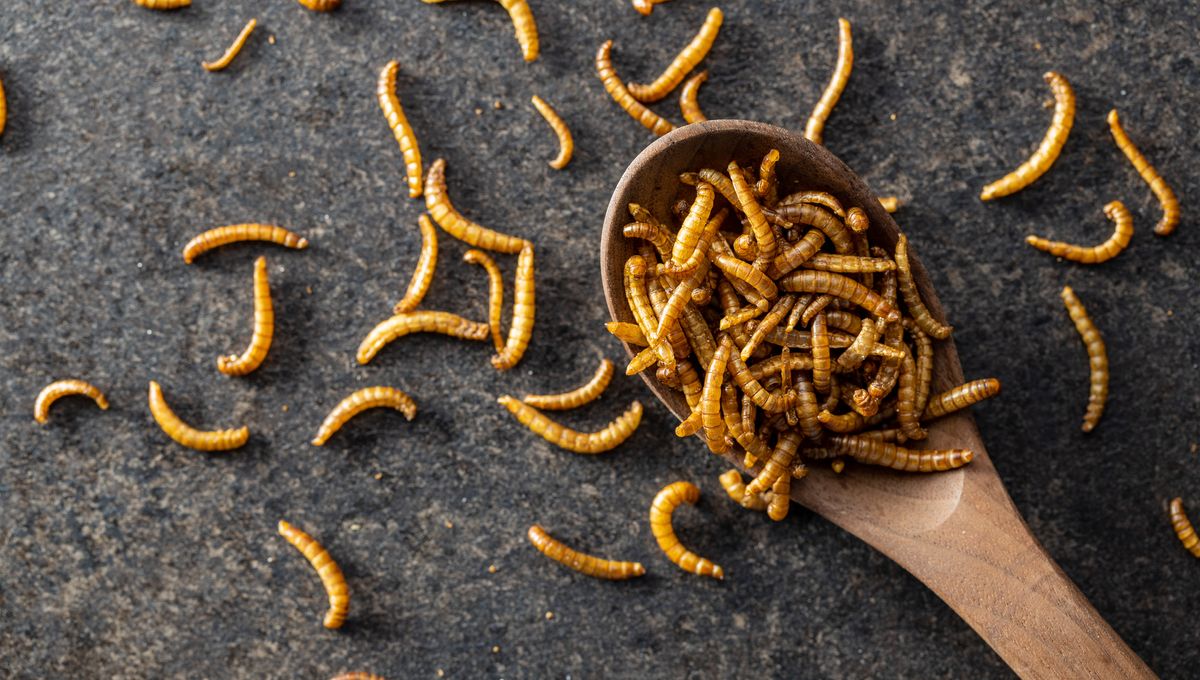
Mealworms are yellow-brown beetle larvae that are often found in the pet aisle as bird, fish, or reptile feed. However, along with being good for animals, these larvae are actually packed full of protein and could potentially be a good meat alternative for us humans as well.
But have you looked at them and thought: “Oooo yummy! They look like they will taste nice?” No? Well, you are not alone. As they are, they don’t look that appealing, and taste-wise they have a slightly nutty but mostly bland flavor. Luckily for us, scientists at Wonkwang University in South Korea have explored ways to improve the flavor profile of these little critters, including cooking them with sugar to create a “meat-like” flavor. The team presented their findings at the fall meeting of the American Chemical Society.
The exploration of new food materials is an important one, as the global food market is continuing to grow but natural food resources are becoming depleted. Eating insects is not a new idea – many cultures across the world eat and sell insects in street food and markets. Along with this, in 2013 the Food and Agriculture Organization of the United Nations (FAO) actually suggested that insects should be considered as a future food resource so that the needs of the global consumer are met.
In fact, in South Korea, there are 10 insects that have been accepted as food ingredients and in 2014 the mealworm was added to this list. In 2021, mealworms were also approved for consumption in the EU.
Eating insects has several benefits: They are more efficient and eco-friendly than typical livestock. Insect farming requires just a fraction of the land, water, and feed compared to farmyard animals. These insects are also very nourishing.
“Recently, eating insects has become of interest because of the increasing cost of animal protein, as well as the associated environmental issues,” said Dr In Hee Cho, the project’s principal investigator, in a statement.
“Insects are a nutritious and healthy food source with high amounts of fatty acids, vitamins, minerals, fiber and high-quality protein, which is like that of meat.”
Despite these insects being approved for consumption, their physical look is often off-putting to consumers and so the insects can be crushed or turned into powder before they are eaten.
The scientists tried to tackle this problem by investigating ways to make mealworms more appetizing. They explored the flavor profile by looking into the volatile compositions of the mealworms throughout their life cycle (from egg to adult). It was found that the different stages of the life cycle contained volatile hydrocarbons that produced specific scents when they evaporated. For example, raw larvae produce sweet corn-like, shrimp-like, and wet soil-like aromas.
These aromas were then analyzed during different cooking methods. Roasted and deep-fried larvae had more shrimp-like and fried-oil-like attributes, whereas steamed larvae had an even stronger sweet corn-like aroma.
What was most interesting was when the team added additional flavors to the cooking process. They added garlic powder, amino acids, mushroom powder, onion powder, and sugar to the mealworms, along with the different cooking methodologies. When they added sugar to the mealworms, they produced a “meat-like” and savory flavor.
The team then investigated this further by testing different ratios and manufacturing conditions of powdered mealworm and sugars. They identified 98 total volatile compounds and then used a panel of volunteers to determine which had the most favorable “meat-like” odor.
“As a result of this study, 10 of the reaction flavors were optimized based on consumer preferences,” said Hyeyoung Park, who was part of the research team.
To the team’s knowledge, this is the first time that mealworms have been investigated in this way, and they hope their findings may encourage more consumers to eat insect-based foods. The team plans to refine the process even more to get rid of the shrimp-like flavor profile that currently remains. Alternatively, they may be able to home in on this seafood-like flavor and use it as a seafood alternative.
Source Link: Mealworms Could Add “Meat-Like” Flavor To Meals – Is This The Future Of Food?